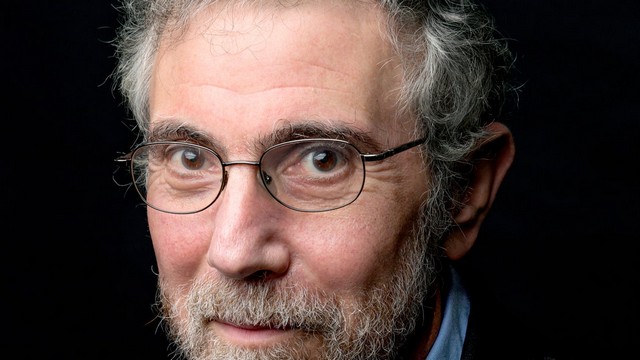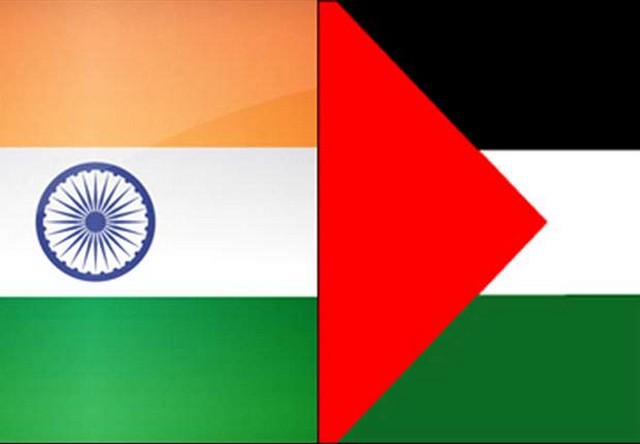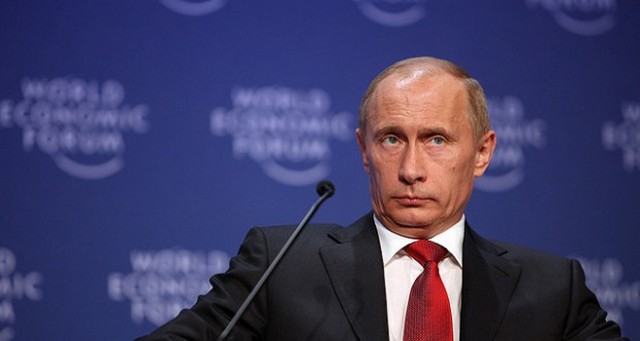By Chris Hedges
The battle for the rights of animals is not only about animals. It is about us. Once we desanctify animals we desanctify all life. And once life is desanctified the industrial machines of death, and the drone-like bureaucrats, sadists and profiteers who operate them, carry out human carnage as easily as animal carnage. There is a direct link between our industrial slaughterhouses for animals and our industrial weapons used on the battlefields in the Middle East.
During wars in rural societies, where the butchering of animals is intimately familiar, butchering techniques are often used on enemies. The mutilation of bodies was routine in the wars I covered in Central America, the Middle East and the Balkans. Throats were slit. Heads were cut off. Eyes gouged out. Hands severed. Genitals stuffed into victims’ mouths. Body parts such as ears and fingers were collected as souvenirs. Balkan villages, which hung slaughtered pigs by their feet from tree branches to drain the carcasses of blood and so the hair could be shaved off, on some days dangled human corpses along the roadsides. Cattle prods were a favored torture implement in the Abu Ghraib prison in Baghdad.
Killing in our mechanized slaughterhouses is overseen by a tiny group of technicians. Industrial farms are factories. Machines kill the animals. And in modern warfare machines kill our enemies. Iraqis, Afghans, Pakistanis, Somalis, Yemenis are condemned, like livestock, from a distance. Hired killers push buttons. Slaughter, at home and at war, is automated. The individual is largely obsolete. The mechanization of murder is terrifying. It creates the illusion that killing is antiseptic. This illusion is sustained by state-imposed censorship that prevents us from seeing the reality of war and the reality of animal slaughterhouses. Killing has gone underground. And this has made vast enterprises of killing palatable.
I witnessed the dismembering and evisceration of human bodies during the siege of Sarajevo by the Bosnian Serbs. It was impossible not to make the link with animals. For several years after the war I would walk out of a restaurant if I saw blood pooling around a piece of rare meat on a plate. All blood is red. Hunks of meat from cattle look like hunks of human flesh. The high-pitched wail of a pig being butchered sounds like the wail of a wounded person on a battlefield.
I recently met Gary Francione, perhaps the most controversial figure in the modern animal rights movement, for lunch at the vegetarian deli of the Whole Earth Center in Princeton, N.J. With me was my wife, Eunice Wong, who was the driving force in our family’s decision last year to become vegans.
Francione is l’enfant terrible of the animal rights movement. He is a law professor and philosopher who founded, along with his partner Anna E. Charlton, the Rutgers Animal Rights Law Clinic at Rutgers School of Law. He and Charlton have five rescue dogs, all of them vegans. In his 1996 iconoclastic book “Rain Without Thunder: The Ideology of the Animal Rights Movement” he criticized animal rights activists for refusing to challenge the idea of animals as property. Many animal rights activists call for more humane treatment of animals—leading to the conscience-soothing labels “ethically raised,” “free-range” and “cage free”—before they are slaughtered, but Francione calls this form of animal activism “tidying up the concentration camps.” He maintains that promotion of what he calls “happy exploitation” deludes consumers into believing they can exploit animals in a “compassionate” way. We have no moral right, he says, to use animals as human resources.
His position puts him at odds with nearly every animal rights group, including People for the Ethical Treatment of Animals (PETA) and The Humane Society of the United States (HSUS), as well as most of the major writers about animal rights. Theorists on animal rights such as Jonathan Safran Foer and Peter Singer believe animal rights revolve primarily around how we use animals, not whether we should use them. Francione attacks this position in his 2008 book “Animals as Persons: Essays on the Abolition of Animal Exploitation.” His iron condemnation of all forms of violence, including by animal rights activists, has enraged militants. Like most other important moral voices, Francione stands almost completely alone.
“These are fundamental issues of justice,” he said of animal rights during our lunch. “These are fundamental issues that require that we take nonviolence seriously. You cannot speak about nonviolence and stick violence into your mouth three times a day. How many of us have grown up with a dog, a cat, a parakeet or a rabbit? Did we love those beings? Did we love them in a different way from the way we ‘loved’ our car or our stereo? Why is that love different? It is different because that is the love of an other, whether that is a human person or a nonhuman person. It is love for an other who matters morally. Did we cry when that being died? It is moral schizophrenia to treat some animals as members of our family and then roast and stick forks into other animals, which have been abused and tortured and that are no different from our nonhuman family members.”
“This is not, however, an issue about whether animals are tortured,” he went on. “The big issue now is factory farming. Do I think factory farming is bad? Well, yes, but so what? Family farms are bad as well. There is a lot of violence that happens on family farms. Consider two slaveholders—one who beats his slaves 25 times a week and the other who beats his slaves once a week. Is Slaveholder Two better? The answer is yes, but it does not address the morality of slavery.”
“It is impossible to participate multiple times a day in victimizing the vulnerable and supporting the suffering and death of sentient others for trivial reasons and not have it make a profound impact,” he said. “It means we accept the injustice of violence. It means injustice is not taken seriously. Injustice fails to motivate us. Violence works when we ‘otherize’ groups of beings and put them on the ‘thing’ side of the line between persons and ‘things.’ The paradigmatic example of this is what we do to nonhuman animals. If we stop otherizing nonhumans it becomes impossible to otherize humans.”
Francione rejects the idea that ovo-lacto vegetarianism and family farms are incremental improvements. The egg and dairy industries, he points out, are vast systems of reproductive enslavement of female animals. Laying chickens and dairy cows are abused as grievously as animals raised for meat, and usually for many more years. Once these animals are “spent” and unable to produce eggs or milk at a profitable rate, they too are slaughtered. And because it is only the females that produce milk and eggs, the dairy and egg industries early year kill approximately 250 million newborn male chicks—often ground up alive for “raw protein” used in pet food and fertilizer—and approximately 2 million male calves, used for veal.
We are told from childhood that cows “give” milk, as though needing to be milked is a cow’s natural state. “Like other female mammals, including human women, female cattle produce milk as a complex hormonal response to pregnancy and birth,” Sherry F. Colb, a former colleague of Francione’s at Rutgers, writes in “Mind If I Order the Cheeseburger?” “Dairy farmers,” Colb continues, “regularly and forcibly place each dairy cow into what is sometimes called a ‘rape rack,’ a device on which animals are restrained while they are inseminated. … If left to her own devices, the mother cow would nurse her baby for nine to 12 months. And as dairy farmers accordingly acknowledge, cows suffer tremendously when farmers take their calves away from them shortly after birth. Cows bellow, sometimes for days on end, and behave in ways that plainly exhibit desperation and misery, including a lack of interest in eating and a tendency to pace around the area where they last saw their calves. … A dairy farmer cannot make a living from this work unless he subjects a cow to pregnancy, removes her calf from her side, and then slaughters the mother cow once her milk production diminishes. These are each unavoidable aspects of dairy farming.”
“All animal agriculture involves violence, suffering and death, including the most humanely produced dairy and eggs,” Francione told us. “The male chicks are ground up alive or pounded or gassed to death. If you are a feminist and you consume dairy you are confused. One of the worst things in the world is the sound of cows when their babies are taken from them. In a conventional dairy the calves are taken away the same day or the next day. In an organic dairy, which is a supposedly higher-level animal welfare ‘happy place,’ they are taken away two or three days later. The mothers cry for days. The fact that we will take a cow with a natural life span of 30 years, impregnate her six times and take away her baby six times and kill her after she has had mastitis for five years is dreadful. This is the commodification of the reproductive processes of a female other, the commodification of a mother and her baby. The reproductive process and the relationship of a mother and her child become a product. I don’t understand how someone can say, ‘I am a feminist, but I drink milk.’ ”
Francione excoriates organic family farms that raise free-range chickens and grass-fed cattle. “The idea that loving something is consistent with killing it is not dissimilar from the man who says ‘I love my wife but I beat her a lot,’ ” he said. “I am not interested in discussions about the cruelty of factory farming. It does not matter. It is not a question of whether you go into the woods, buy a small farm and the animals come into the house at night so you can all play cards. The entire institution of animal exploitation is wrong. Our moral thinking about animals is terribly confused.”
When asked how he thought this happened, he answered: “Where we have gone wrong is our belief that because animals are cognitively different from us they have lesser moral value. They are not as cognitively sophisticated as we are—they don’t write symphonies or do calculus—so we can eat, wear and use them, as long as we do so ‘humanely.’ Most animal rights activists argue that ‘using them is not the problem, the problem is how we treat them.’ My view is that using them is the problem. It does not matter how well we treat them. Obviously, it is worse to impose more suffering than less suffering, but that does not mean it is all right to use them in a ‘humane’ way. If someone sneaks into your room while you are sleeping and blows your brains out and you do not feel a thing, you are still harmed. You may not have suffered. But you have been harmed.”
The idea that … animals [are] of lesser moral value is dangerous,” he added. “It creates hierarchies that can also be used within human communities. Once you are sentient, or are subjectively aware, you have one moral right—the right not to be used as a resource. It does not mean you get treated equally for all purposes, but it does mean you are not treated as a slave or as a commodity. A slave is excluded from the moral community. A slave has no inherent value. A slave has only external value. A slave is a thing. This is what we have done to animals. Animals are property. Animal welfare laws cannot work because they are based on balancing the interests of humans and nonhumans. As long as animals are chattel property the animal owners win. As long as animals are chattel property the standard of animal welfare will always be tied to what we need to exploit them because we will generally protect animal interests only to the extent that we get an economic benefit from doing so. Animal welfare reform, for this reason, has usually worked to make animal exploitation more economically efficient. The reason why you have the Humane Slaughter Act of 1958, which requires that large animals be stunned before they are shackled and hoisted, is because if you have a 2,000-pound animal hanging upside down the cow hits workers. Workers are injured. You have carcass damage. If you look at the arguments put forward for chicken producers to switch to controlled atmosphere killing, essentially gassing, from the electrical stunning method, still widely used, those arguments—made by groups such as PETA and HSUS—are based on economic efficiency. Animal advocates are [in effect] arguing that if you gas the chickens it cuts down on carcass damage. This does not move animals out of the property paradigm. It further enmeshes them in it. It is only about efficient exploitation.”
“All of the large animal charities, such as PETA and HSUS, are businesses,” he said. “They want to maximize their donor base so they try and let everyone stay in their comfort zone. They don’t take the position that veganism is the only rationally and morally acceptable response to the recognition that animals have moral significance. They promote reform and not abolition. Unfortunately, we live in a postmodern, poststructuralist society. No one is supposed to be a moral realist. And yet we all have certain intuitions that we accept as true. We know, for example, that suffering is bad. Nobody says suffering is good, except for perhaps a masochist, but even then the masochist only embraces suffering when he or she gets pleasure from it. You can derive an enormous amount of what you need morally in the world from the simple idea that suffering is morally bad. You can’t justify doing to someone else what you would not want done to you. This is a moral truth. We all say it’s wrong to inflict unnecessary suffering. We all agree that necessity cannot mean just pleasure. But the only justification we have for eating any animal foods is palate pleasure. We don’t need animal foods for optimal health, and animal agriculture is an ecological disaster. We criticize people like Michael Vick for inflicting unnecessary suffering on animals, but we’re all Michael Vick. Our exploitation of animals is no more necessary.”
“I worry that we have raised a generation that has not been taught to think morally,” Francione said. “Yes, my generation often thought about morality superficially. I do not want to romanticize the past. But events such as the Vietnam War forced us to ask what were we doing as a nation. We feared getting drafted, of course, but the war helped us see. It forced us to think about moral issues. But morality today has been reduced to a matter of mere opinion. This is dangerously wrong. The morality of unjustified and unjustifiable exploitation is not a matter of opinion; it is a matter of moral fact.”
“There is an intimate relationship between human rights and animal rights,” said Francione, who teaches a course on human rights and animal rights with Charlton at Rutgers University. “You cannot think about this in isolation. Sexism, racism and classism are about turning others into objects. How can we talk intelligently about nonviolence when we are putting the products of violence into our mouths? We are wearing the products of violence. This is about justice. It is about justice for nonhumans, for women, for Palestinians, for African-Americans and for prisoners. Pornography represents the commodification of women. When you use pornography there is no longer a person there. There is a body part that you fetishize. The person has become a thing. You are consuming that thing. This is not all that different from going to the store and buying chicken in a Styrofoam package. The chicken is not [seen as] an animal. It is a product in Styrofoam covered with cellophane. All commodification is connected, and it’s all wrong.”
Isaac Bashevis Singer in his short story “The Letter Writer” said that human beings were Nazis to animals and had created “an eternal Treblinka” for the animal world. He, as well as writers such as Marguerite Yourcenar and J.M. Coetzee, saw in animal slaughterhouses the preliminary models for torture centers, extermination camps, genocide and war. Kazuo Ishiguro explored the idea of sentient beings raised “humanely” as commodities in his dystopian novel “Never Let Me Go,” in which cloned children, “donors,” are nurtured in special boarding schools resembling the finest private schools, but die in young adulthood when their organs are harvested for “normals”—uncloned humans.
“I believe as long as man tortures and kills animals, he will torture and kill humans as well—and wars will be waged—for killing must be practiced and learned on a small scale,” Edgar Kupfer-Koberwitz wrote in his “Dachau Diaries” while he was held in that Nazi concentration camp.
“Even though the number of people who commit suicide is quite small, there are few people who have never thought about suicide at one time or another,” Isaac Bashevis Singer wrote. “The same is true about vegetarianism. We find very few people who have never thought that killing animals is actually murder, founded on the premise that might is right. … I will call it the eternal question: What gives man the right to kill an animal, often torture it, so that he can fill his belly with its flesh. We know now, as we have always known instinctively, that animals can suffer as much as human beings. Their emotions and their sensitivity are often stronger than those of a human being. Various philosophers and religious leaders tried to convince their disciples and followers that animals are nothing more than machines without a soul, without feelings. However, anyone who has ever lived with an animal—be it a dog, a bird or even a mouse—knows that this theory is a brazen lie, invented to justify cruelty. … [A]s long as human beings will go on shedding the blood of animals, there will never be any peace. There is only one little step from killing animals to creating gas chambers à la Hitler and concentration camps à la Stalin … all such deeds are done in the name of ‘social justice’. There will be no justice as long as man will stand with a knife or with a gun and destroy those who are weaker than he is.”
Chris Hedges writes a regular column for Truthdig.com.
05 January, 2015
Truthdig.com










